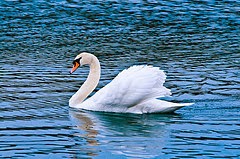Because Second Grade is taking a field trip to the zoo soon, we took a virtual field trip using the zoo map on the zoo website. Next, we explored a few animal options and voted on a favorite animal. We thought about the facts we knew about the animal such as speed, size, and habitat. This helped us make musical choices.
Over the next three music classes, students created a piece that had a Introduction, ABA, repeat signs, an ostinato, and a Coda. We created this by telling a story that matched the form.
Grade 2 - Polar Bear - Moderato
Introduction: Once upon a time, there was a happy Polar Bear.
Students chose the Wind Chime to represent the arctic wind. The Finger Cymbals and Glockenspiel represented the snow and ice.
A: The polar bear goes hunting for a seal.
Students chose the triangle to play a steady beat to represent snow. The tubano drums play a steady beat to represent the polar bear walking around. The jingle bells play a rhythmic ostinato.
B: The polar bear hears a crack and falls through the ice!
Glissandos on the met allophones represent the polar bear sliding on the ice. Guiros portray the cracking of the ice. Rainsticks provide sound effects for the swimming polar bear.
A: The polar bear goes back to hunting for a seal.
(See A section above.)
Coda: And then, the polar bear catches the seal and eats it!
A Rachet represents the polar bear catching the seal and temple blocks represent the polar bears teeth biting his catch.
A Rachet represents the polar bear catching the seal and temple blocks represent the polar bears teeth biting his catch.
Grade 2 - Cheetah - Presto
Introduction: Once upon a time, there was a sad cheetah who lived in Africa.
Students chose Tubanos to represent Africa. They chose sand blocks to make the sounds of grass.
A: The cheetah goes hunting for some food to make him happy.
Students chose Tubanos played with wiggling fingers to represent the cheetah running. Cabasas were used to make grass sounds. Bass xylophones were chosen because they were made of wood and remind us of trees.
B: The cheetah catches his prey and eats it!!!
Students chose to continue the Tubano sound with wiggling fingers that turn into a loud BOOM when the cheetah catches his prey! The maracas add tension to the chase.
A: The cheetah goes back to hunting for more food.
(See A section above.)
Coda: And then, the cheetah growls and goes to sleep.
Students chose a guiro to represent the growl of the cheetah. Glockenspiels make the sound of a lullaby and wind chimes complete the piece as the cheetah falls asleep.
Grade 2 - Giraffes - Moderato
Introduction: Once upon a time, there was a quiet, happy Giraffe that lived in Africa.
Students chose the hand drum to represent hooves walking. They picked a rhythmic ostinato with 6 steady beats followed by a rest to present the giraffe walking then stopping eat eat leaves.
A: The giraffe stops, lifts his neck and eats some leaves from the tree.
Students chose a xylophone to represent the wood of the trees. They made an up pattern to present the giraffe's neck being lifted. Lummi sticks play to represent 2 bites. Sandblocks represent the giraffe chewing the leaves.
B: The giraffe looks around to see if it is safe and all is well. Then it gets a drink of water.
The Wind Chime represents the wind. The rest represents the giraffe looking around. The glockenspiels, rainsticks, and student-made shaker represent the water as the giraffe gets a drink.
A: The giraffe goes back to eating leaves.
(See A section above.)
Coda: And then, the giraffe hears another giraffe eating. The giraffe turns around, looks, and finds a friend!
Two xylophones, two cabasas, and two pairs of lummi sticks represent the two giraffes eating leaves. The triangle represents their happiness at finding a friend.
Grade 2 - Snakes - Moderato -
Students chose maracas and snake gourds to represent the snake and a glass xylophone to represent the glass cage.
A: The snake wakes up, and slithers around his cage.
Students chose sand blocks and hand drums (played with scraping) to represent the snake slithering.
B: The snake slides into his water bowl for a swim / bath.
Students chose rainsticks and glockenspiels to represent the water and swimming.
A: The snake goes back to slithering around his cage.
Students chose sand blocks and hand drums (played with scraping) to represent the snake slithering.
Coda: And then, the snake eats a mouse for dinner!
Students chose a Tubano (wiggling fingers) to represent a mouse running through the cage and a Tone Block to represent the snake catching the mouse.




















